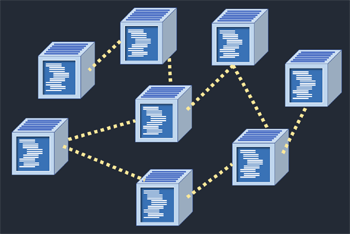Summary and Conclusions

Summary
This topic provided an overview of blockchain technology, examples of its uses, samples of implementing products, some of the related Government initiatives, concerns with this technology, considerations pertinent to applications of this technology, and links for further reading.
The Introduction section described the origins of blockchain and why it is considered a "disruptive" technology.
In order to understand how it works, Architecture provides some definitions and a concise high-level description of how systems built with blockchain technology function.
The variety of Commercial Examples illustrated the power and broad applicability of this technology to solve a wide range of problems across diverse marketplaces.
Blockchain has an emerging presence in Commercial Products including many entrepreneurial startups and significant investment by the established tech firms.
The descriptions of Government Initiatives showed that multiple segments of the US federal government recognize the significance of blockchain technology and are scrambling to meet their responsibilities in this area.
The discussion of Concerns balanced the enthusiasm for evolving blockchain implementations with its cold hard limitations.
The section on Decision Process presented some important questions that should be considered prior to implementation of a blockchain solution to ensure that it is appropriate for a specific need.
Blockchain technology is especially relevant in today's information technology environment where there is increasing emphasis on improved efficiencies, agility, modernization, and capabilities, while reducing duplication, infrastructure, costs, staffing, and entanglements. The technology is relatively new, and because it was implemented to support Bitcoin, the more mature applications can be found in the Financial arena. But blockchain's theoretical ability to provide authentication and authorization, provenance, establish digital identity, serve as a system of record, and prove immutability makes it worth pursuing for a myriad of other applications. Ongoing testing, pilots, and projects will determine whether the prospective overcomes the hype and provides the evidence. If its potential can be substantiated, blockchain will become the next disruptive technology in a long line of transformations, globally impact directly or indirectly everyone in many ways, and be pervasive in every aspect of our daily lives.
Conclusions
Blockchain is not a panacea. Blockchain cannot solve all problems. Blockchain is not a new technology but a new combination of older technologies connected on a new platform. The sum of these technologies and the platform has great potential in many commercial and government areas. In some of these areas, blockchain has the potential to be a disruptive agent to the way business is done today. Blockchain is operational today in numerous areas and is under test and evaluation in many more.
As the technology matures, becomes more familiar, and is widely researched, tested, piloted, and implemented in both the private and public sectors, blockchain could represent the future of how entire industries operate and partner with the US government, and how the government itself, conducts business in a transparent and streamlined manner. Despite words of low confidence in blockchain, a recent survey by 451 Research found that about 3 percent of enterprises have started to use blockchain-based applications and that there is intense interest in blockchain. 28 percent of enterprises say that they are actively testing blockchain and 67 percent say that they have already spent more than $100,000 investigating blockchain solutions.
Blockchain technology may be the beginning of something that can benefit everyone both on a vocational and personal level. The technology is very exciting and, as with the introduction and maturation of any new technology we should expect a few bumps, and possibly unintended consequences, along the way (as experienced with the Internet's maturation). Blockchain is still a new and relatively untested technology with the potential to offer many advantages, but we will have to wait to see how these changes flourish. Blockchain will remain as one of the most interesting technologies to keep an eye on in the next few years.
Blockchain techniques have already been commoditized. Cloud implementations widely allow blockchain nodes based on every popular code base. At this point we can collectively get creative, attack real business problems, and launch proofs-of-concept to better understand the power of blockchain.
Continue to Blockchain Links.







